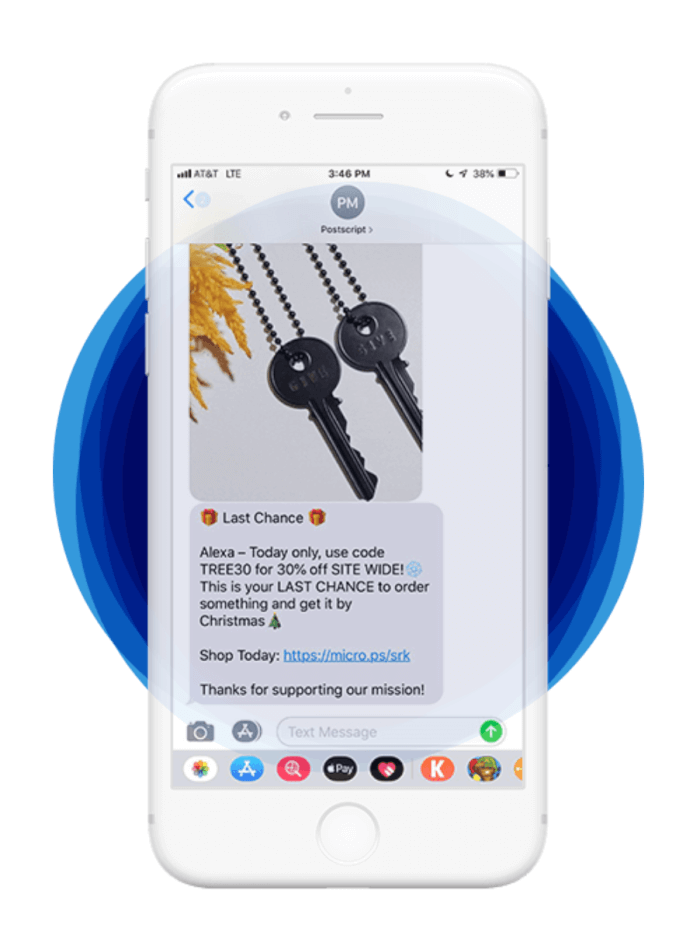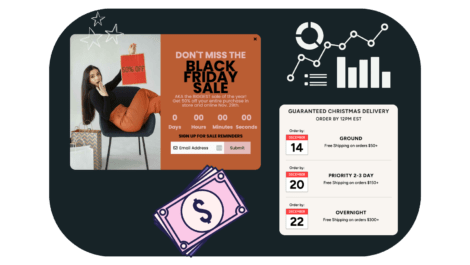Most of us probably wish our smartphones didn’t provide a weekly screen time report. Nonetheless, just as your phone reports how many hours you spent looking at your screen last week, the research lays it out as well: The average American checks his or her phone 47 times each day. For e-commerce entrepreneurs and marketers, that is a compelling number.
Sure enough, SMS marketing has already made waves in e-commerce, changing the way brands interact with their customers while offering new potential revenue streams. SMS messages carry a 98% open rate and a 209% higher response rate than email or Facebook messages. That said, any omnichannel marketing strategy today must include SMS.
For Shopify users, Postscript has emerged as the leading SMS marketing platform. With Postscript, it’s easy to create, launch, and manage an SMS marketing program that drives revenue rather than just clicks.
Superior SMS Segmentation
While nearly everyone opens SMS messages, Postscript reports 35% clickthrough rates, leading to new revenue. They’re so confident in their formula; they guarantee 4x ROI. However, on average, their customers see a 26x ROI.
One of the chief reasons Postscript is so effective is due to its robust segmentation tools. With Postscript, you can bucket your customers in a wide variety of ways.
Want to target repeat customers with a special promotion? Easy.
Want to lure back one-time purchasers with a free shipping offer? No problem.
Noticed that some customers gave you a phone number but didn’t purchase anything? Text them to ask what you could be doing better.

Postscript allows you to create ultra-targeted audiences based on what or when they bought, what marketing channel they came from, how much they spend, and much more. Each message is more personalized than a generic email and is more likely to generate a reply. Not only, then, does SMS work as its own marketing channel but it also enhances all of your other channels.
By creating such intricately targeted segments, you can start to recapture lost revenue and generate better leads, especially while using Postscript in conjunction with conversion platforms like Justuno.
Best-In-Class Automations
An omnichannel marketing strategy requires casting a wide net. One of the best ways to reach as many people as possible with your messaging is through automation.
Designing campaigns in Postscript is easy, whether you want to announce a new product, offer a promo code, or gather customer feedback. A WYSIWYG design tool lets you see exactly what your customers will receive so you can be sure the messaging is perfect before you launch a campaign.
When you are ready to launch, Postscript’s tools allow you to customize intelligent, automated drips that are relevant to every customer. From Welcome Series and Abandoned Carts to Winbacks, Shipping Notifications, and more, Postscript allows you to automate any number of common customer communications.
Through best-in-class automations, SMS marketing provides customers with relevant information as soon as they need it, amplifying your omnichannel marketing efforts and providing value for all of your company’s teams. With Postscript’s top-tier analytics, you can easily adapt and hone each of your automated sequences and campaigns to find the best formula for your business.

Efficient User Acquisition and Communication
Acquiring a new customer is five times more expensive than keeping an existing one. SMS marketing lowers the cost of acquisition while also bolstering your retention efforts.
Use Justunon to build SMS pop ups that make subscriber acquisition effortless. Some top example of SMS pop ups include: two step lead capture forms, tap-to-text opt-ins, gamification, and more.
Once subscribed, customers can enjoy the convenience of aut
omated SMS interactions or the personal touch of 1:1 conversation. Customer service agents can answer questions securely while sales teams can close sales via text. Likewise, you can set up your SMS account to forward communications to your support email to manage all of your customer-facing communication in a central hub. Happy users are ones who know they’re talking to a real human, through a familiar, easy to use channel.
Postscript also integrates seamlessly with Shopify to auto-sync with your store, adding new customer profiles instantly and working with your existing Shopify integrations.
Simplified Compliance
One of the greatest challenges for businesses is ensuring they are fully compliant with government regulations. This is especially true when navigating new marketing channels like SMS. If not properly implemented, SMS marketing can carry significant legal risk for e-commerce stores.
Having been on the forefront of the technology, Postscript is one of the only authorities on SMS compliance. They are fully up-to-date on US TCPA regulations, and they educate new customers on preventative measures to avoid compliance risks during onboarding.
SMS marketing has emerged as a valuable, creative channel to generate new revenue, increase brand awareness, and connect with customers.
Postscript has been on the forefront of this trend. If you’re looking to amplify your omnichannel marketing efforts without inflating your budget, SMS marketing is a safe bet. Test it out for free for 30 days with Postscript.


